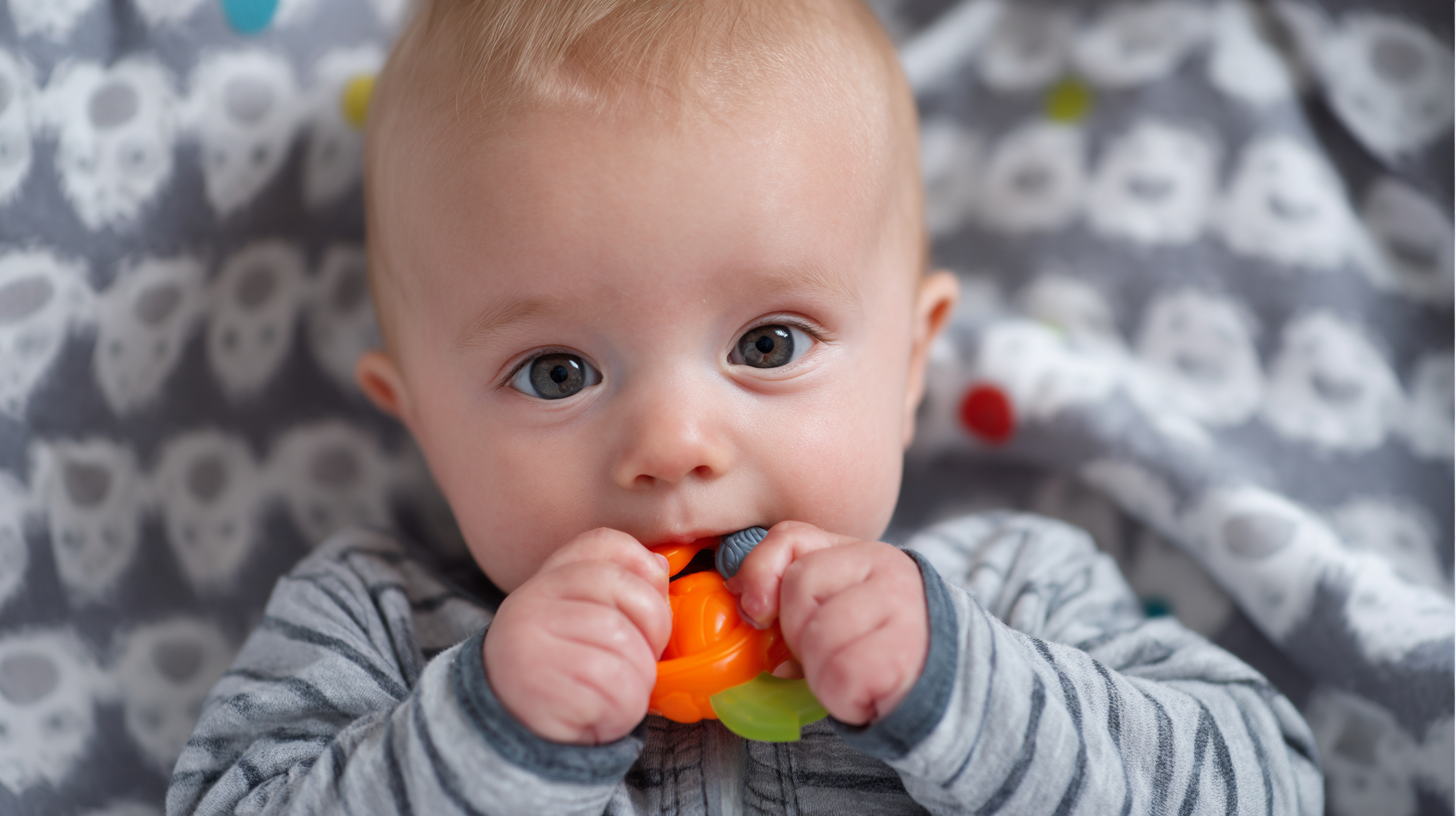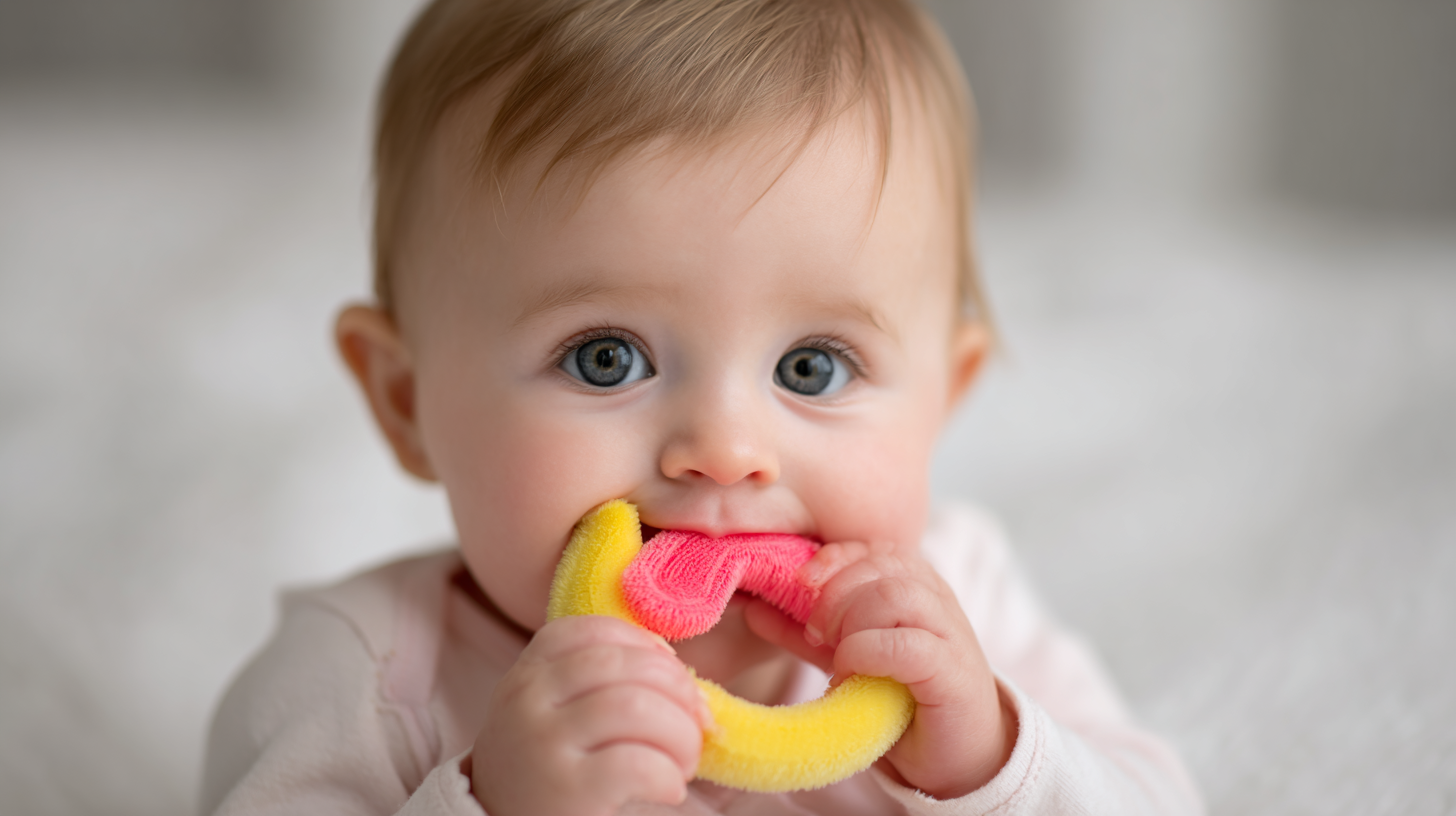
What Makes Best Baby Teethers Essential for Your Infants Development
When it comes to your infant's development, choosing the right products is crucial, and baby teethers are no exception. These essential items not only help alleviate the discomfort of teething but also play a significant role in stimulating your baby's senses and promoting healthy oral development. However, with countless options available in the market, finding high-quality baby teethers that meet safety standards and are effective can be a daunting task for parents. This blog will guide you through the process of identifying premium suppliers and provide top strategies for selecting the best baby teethers. By understanding what makes a teether effective and safe, you can make informed decisions that contribute positively to your child's growth and well-being.

When it comes to your infant's development, choosing the right products is crucial, and baby teethers are no exception. These essential items not only help alleviate the discomfort of teething but also play a significant role in stimulating your baby's senses and promoting healthy oral development. However, with countless options available in the market, finding high-quality baby teethers that meet safety standards and are effective can be a daunting task for parents. This blog will guide you through the process of identifying premium suppliers and provide top strategies for selecting the best baby teethers. By understanding what makes a teether effective and safe, you can make informed decisions that contribute positively to your child's growth and well-being.
Understanding the Importance of Teething in Infant Development
Teething is a significant milestone in an infant's development, typically occurring around six months of age, though it can start as early as three months or as late as twelve months. During this period, infants experience various physical and emotional changes as their teeth begin to emerge. According to the American Academy of Pediatrics, over 75% of infants exhibit signs of discomfort during teething, which can include irritability, disrupted sleep, and an increased desire to chew on various objects. This is crucial as it informs caregivers about the dual role teething plays in development: not only is it a physical process, but it also impacts social and emotional growth as infants learn to cope with discomfort and the new sensations associated with teething.
The teething phase also encourages the development of fine motor skills as infants grasp, chew, and manipulate teethers. Research from the Journal of Pediatric Dentistry highlights that using the right types of teethers can provide not only relief from discomfort but also support sensory development. The textures and shapes of teethers stimulate the oral and tactile sensors of infants, paving the way for improved hand-mouth coordination essential for later feeding skills. These developmental aspects underline why selecting high-quality, age-appropriate teethers is vital: they not only alleviate the discomfort of teething but also serve an integral role in an infant's overall developmental journey.
Key Features to Look for in the Best Baby Teethers
When selecting the best baby teethers for your infant's development, several key features are essential to consider. First and foremost, the material used in the teether plays a critical role in safety and comfort. According to a study by the American Academy of Pediatrics, teethers made from BPA-free plastic or natural rubber are recommended to ensure they are non-toxic and safe for infants, who are often inclined to chew vigorously. Additionally, products that are dishwasher safe provide a guarantee of hygiene, which is crucial during the teething phase.
Another important aspect is the teether's design, which can influence its effectiveness. Ergonomically designed teethers that are easy for small hands to grip encourage independent exploration, fostering fine motor skills development. Research indicates that teethers with varied textures can help soothe sore gums while also stimulating sensory exploration, which is vital for cognitive development. Moreover, some teethers feature cooling elements that can be refrigerated to provide extra relief, making them particularly beneficial for infants enduring the discomfort of teething. By focusing on these features, parents can select teethers that not only comfort their babies but also support their overall developmental milestones.
What Makes Best Baby Teethers Essential for Your Infants Development - Key Features to Look for in the Best Baby Teethers
| Feature | Description | Importance for Development |
|---|---|---|
| Material Safety | BPA-free, non-toxic materials that are safe for infants | Prevents harmful chemicals from affecting baby's health |
| Textured Surface | Different textures promote sensory exploration | Enhances tactile awareness and sensory development |
| Easy to Grip | Designed for small hands to hold comfortably | Encourages fine motor skills as babies grasp and manipulate |
| Cooling Capability | Some teethers can be chilled for added comfort | Soothes gums and eases teething discomfort |
| Shape Variety | Available in various shapes to maintain interest | Stimulates imagination and promotes engagement |
| Durability | Robust materials that withstand chewing and biting | Provides long-lasting use for teething infants |
Natural Materials vs. Synthetic: What’s Best for Your Baby?
When it comes to selecting the best baby teethers, the choice between natural and synthetic materials can be overwhelming for parents. Natural materials, such as wood and silicone derived from plant sources, are often favored for their safety and eco-friendliness. They are free from harmful chemicals and provide a soothing, gentle texture for infants who are teething. Organic wooden teethers, for instance, can be a wonderful option as they are not only safe but also promote a sustainable lifestyle.

On the other hand, synthetic materials can offer certain advantages in terms of durability and ease of cleaning. Many modern synthetic teethers are designed to be free from BPA, phthalates, and other harmful substances, making them a safe choice as well. However, it’s essential to always check for safety certifications to ensure that the teether meets health standards.
Tip: Look for teethers that combine both materials for versatility. For instance, a silicone teether with wooden accents can provide the best of both worlds. Tip: Always supervise your baby while they are using a teether to ensure their safety, regardless of the material. Tip: Opt for teethers that are easy to clean, as hygiene is paramount in keeping your infant healthy during their teething phase.
How Teething Toys Promote Healthy Oral Development
Teething can be a challenging phase for infants, but selecting the right teething toys can significantly enhance their oral development. The primary function of baby teethers is to soothe sore gums and facilitate the gradual emergence of teeth. As babies gnaw on these toys, they engage in important oral motor activities that promote coordination and strength in the mouth, which are crucial as they prepare for eating solid foods.
When choosing a teether, consider materials that are safe and easy to clean, such as silicone, rubber, and wood. These materials not only provide a satisfying texture for your baby to chew on but also help in developing their sensory perception.
**Tips for Parents:** When introducing a teething toy, observe your baby’s preferences. Some may prefer softer toys, while others might enjoy something more firm. Additionally, periodically refrigerating the teether can provide extra relief for sore gums and make the experience more enjoyable for your little one. Always ensure that the teether is free from harmful substances to safeguard your infant's health.
Impact of Different Types of Teething Toys on Oral Development
This chart illustrates the effectiveness of various teething toys on promoting healthy oral development in infants. The data shows the percentage of pediatricians who recommend different types of teething toys: silicone, wood, and cloth. Each type offers unique benefits during the teething phase.
Tips for Maintaining Hygiene and Safety with Baby Teethers
When it comes to baby teethers, maintaining hygiene and safety is paramount. According to a report by the American Academy of Pediatrics, around 70% of parents are unaware of the proper sanitation practices for their infants' teething toys. Since babies explore the world by putting objects in their mouths, it's essential for parents to clean teethers regularly to avoid the introduction of harmful bacteria. Simple practices such as washing teethers with warm soapy water and fully rinsing them can significantly reduce the risk of infections. Additionally, sterilizing silicone or plastic teethers in boiling water for a few minutes can ensure they are safe for your child.

Safety is another critical aspect of choosing and maintaining baby teethers. A study published in the Journal of Pediatrics highlighted that nearly 50% of parents choose teethers based on aesthetics rather than safety standards. Parents should check for products that are BPA-free and adhere to safety regulations to prevent exposure to toxic substances. The Consumer Product Safety Commission recommends inspecting teethers for small parts that could pose a choking hazard. By staying informed and implementing these practices, parents can ensure their infants have the best experience while teething, promoting both comfort and development during this crucial stage.
